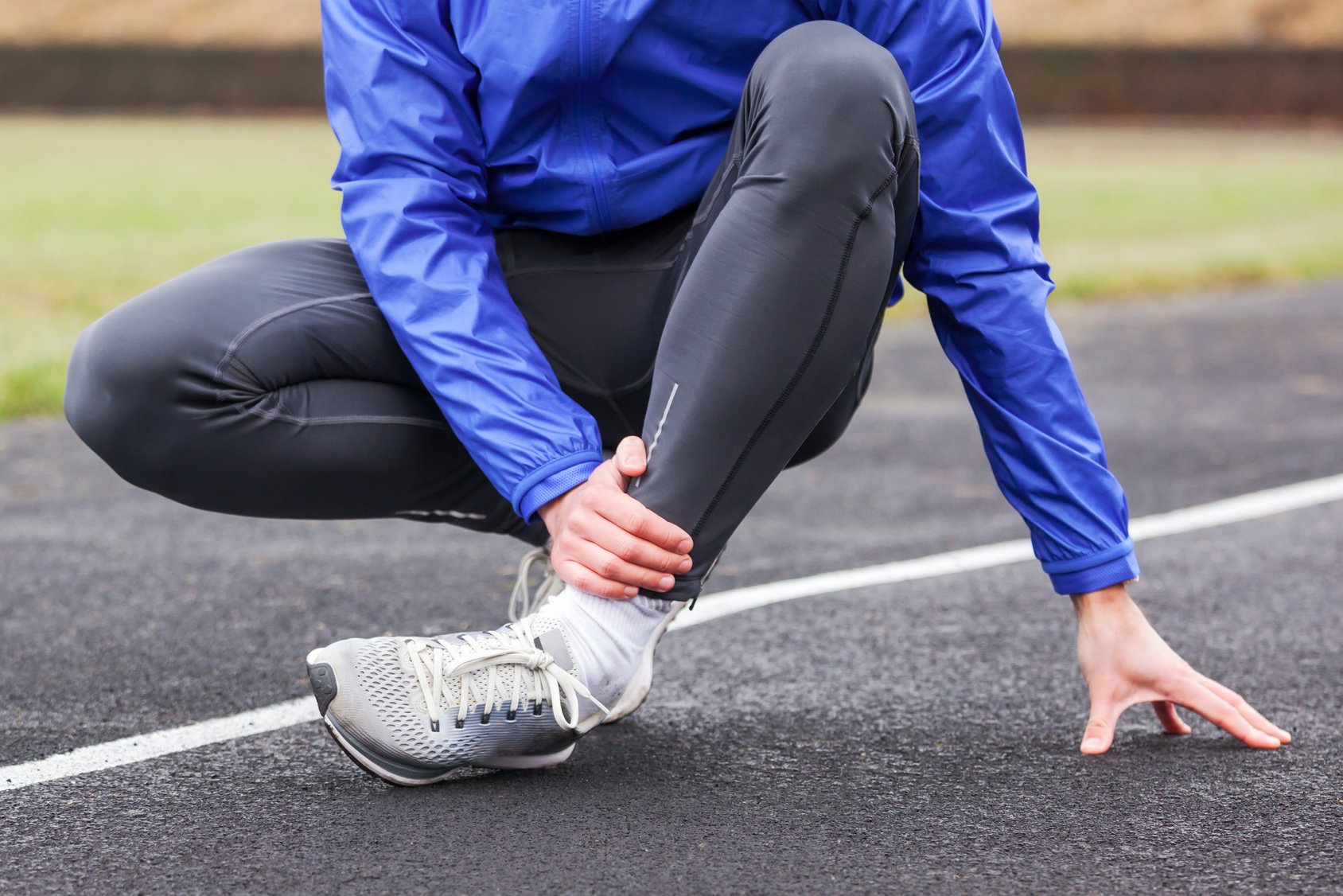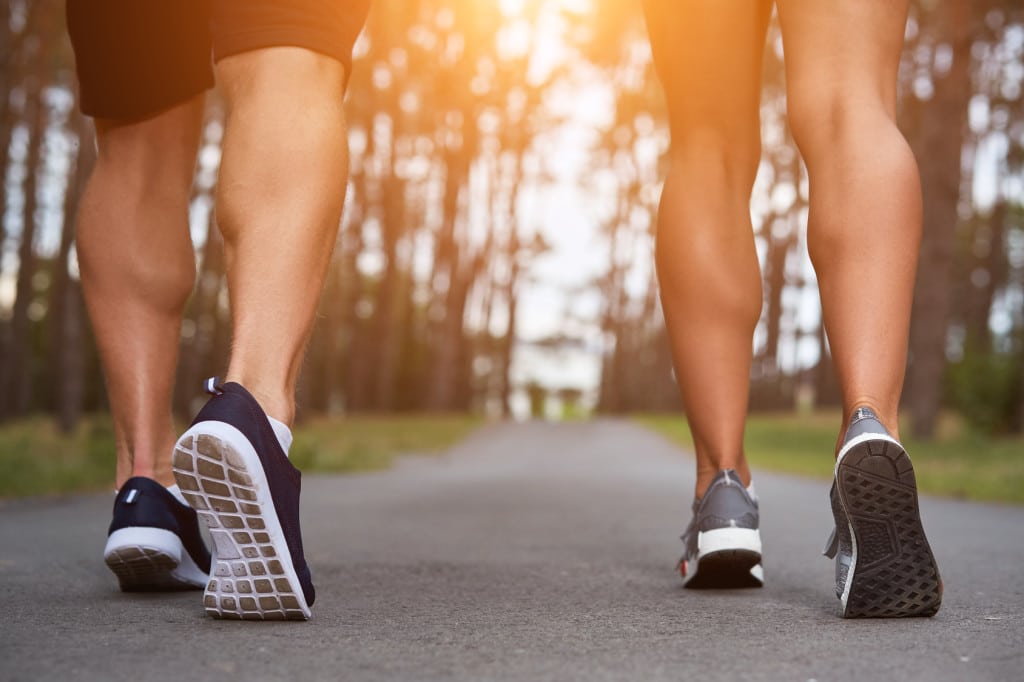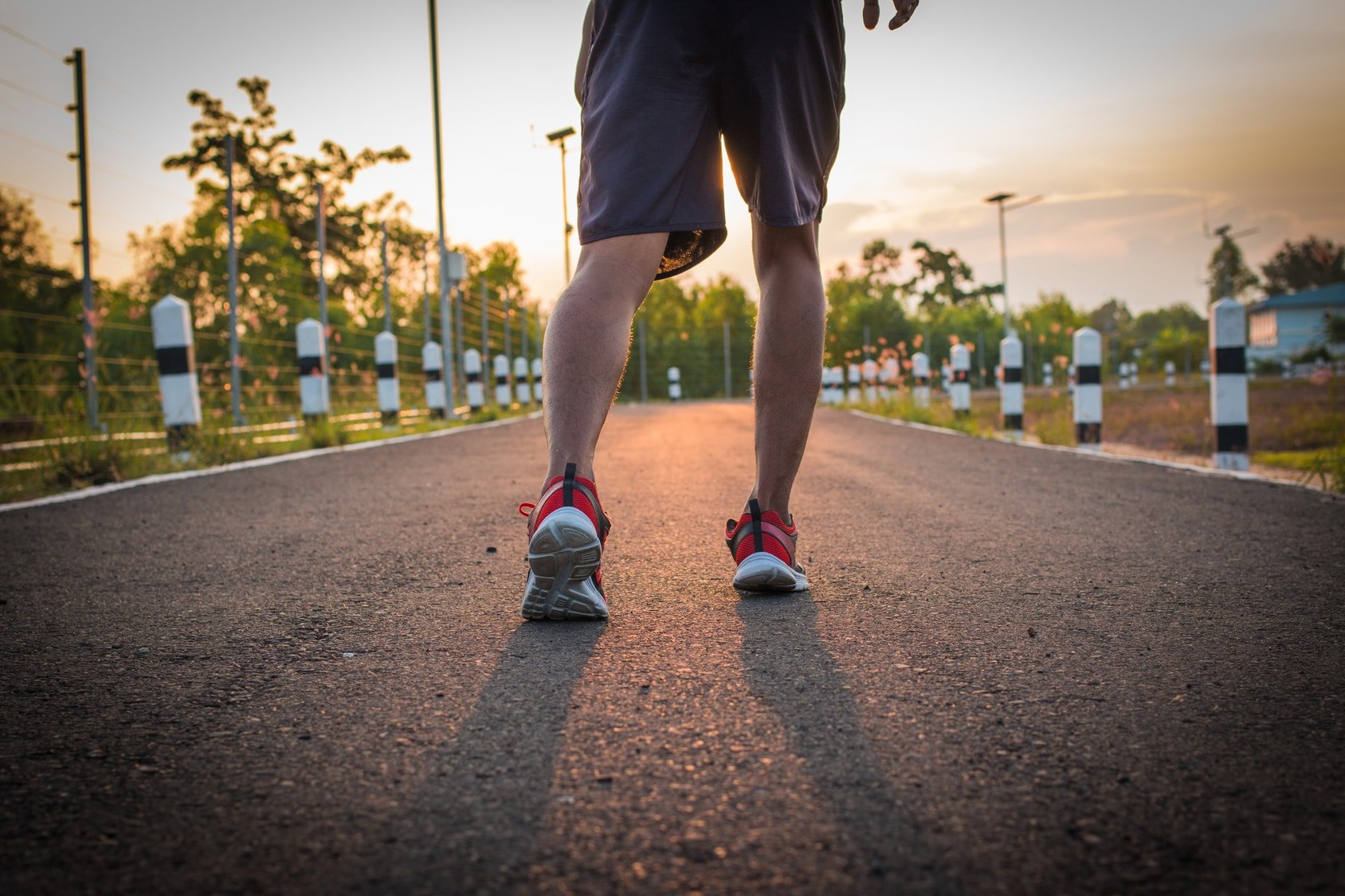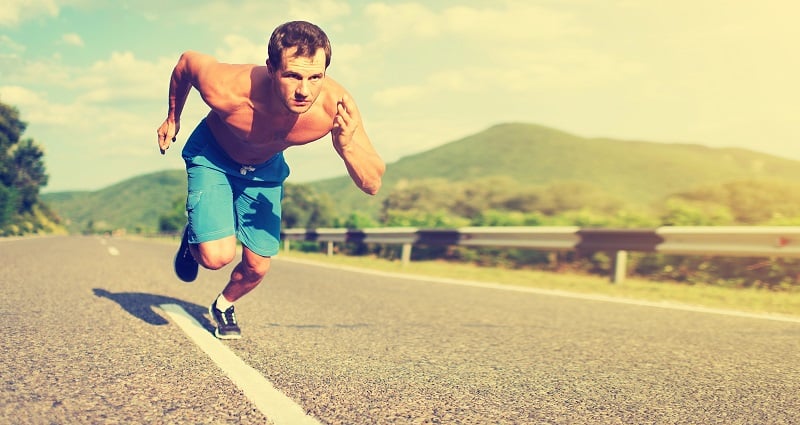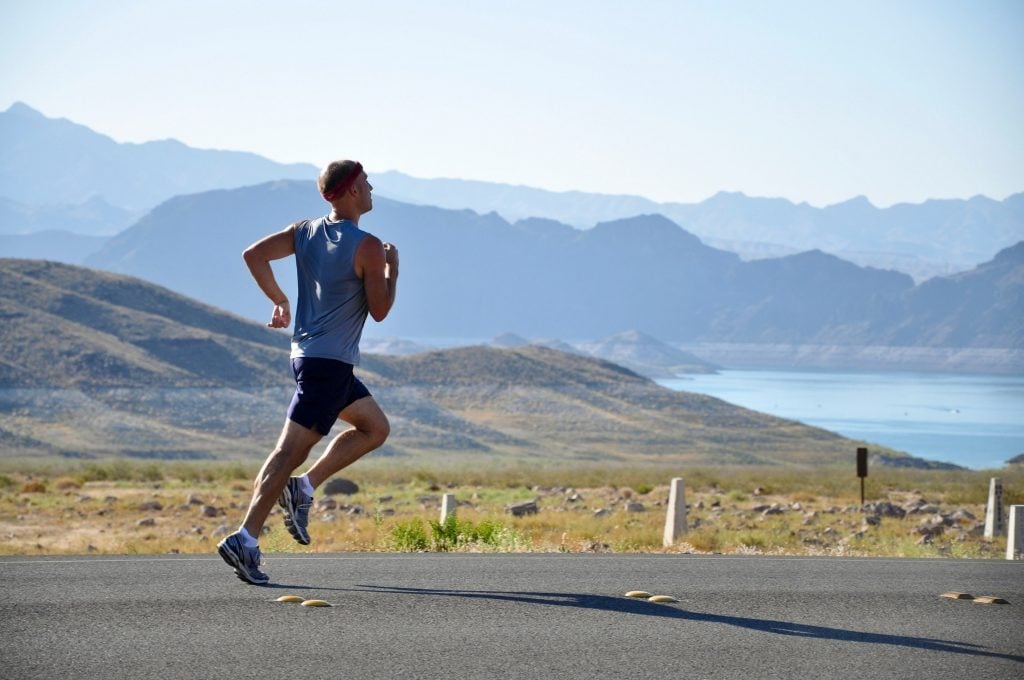Ever stumbled upon plyometric training and wondered if it’s the secret sauce to running greatness? Spoiler alert: it is, and I’m living proof!
Plyometrics, often referred to as “plyos,” is a training technique that focuses on quick, explosive movements designed to improve power, speed, and agility. It’s all about harnessing your body’s elastic energy to generate force rapidly. See, it’s not that complicated.
And for us runners, plyos are key for unleashing our full running potential. This is true whether you’re a sprinter looking to shave milliseconds off your time or a distance runner aiming to increase your kick at the finish line.
In today’s article, I’ll dive into some of the science behind plyometric training and explain the benefits behind this powerful training technique.
Sounds like a good deal?
Then let’s get started.
Plyometric Training
To really understand the power of plyometrics and its impact on your running, it’s key to get some grasp of the fundamentals
Also known as explosive training, plyometric training targets the fast-twitch muscle fibers that play a crucial role in sprinting and acceleration, focusing on rapid and explosive movement. The core principle involves harnessing the stretch-shortening cycle of muscles, which is a natural mechanism in our bodies.
Therefore, by preforming plyos often, you can:
- Boost your acceleration during races. Perfect for those chasing a PR.
- Improve your ability to overcome obstacles and rough terrain. Ideal for any serious trail runner.
- Increase your running economy, allowing you to maintain higher speeds with less effort. Great for any runner.
I was always just a casual jogger, never really serious about my running routine. But when a friend introduced me to plyometrics, I was skeptical. The idea of high-intensity, explosive exercises seemed daunting.
Yet, I decided to give it a try. Initially, it was tough. My legs felt like jelly, and I couldn’t keep up with the rapid movements. But I persisted, and within weeks, I started to feel stronger.
My running pace improved, and hills that used to slow me down became easier to tackle. Plyometrics transformed not just my running, but my attitude towards fitness.
The Secret Behind Plyos
So, what’s the secret behind plyometric exercises? It’s a little something called the “stretch-shortening cycle” or SSC for short.
During plyo training, your muscles go through a unique process. First, they lengthen as they absorb energy during an eccentric contraction, and then they rapidly transition to a concentric contraction, releasing that stored energy like a coiled spring.
Okay, I know that might sound a bit technical, but bear with me.
Let’s break it down. Plyometric exercises are all about speed, power, and intensity. I’m talking about movements that make your heart race and your muscles ignite. Imagine explosive movements such as skipping, springing into the air and squat jumps.
The whole point of plyometric training is to maximize muscle contractions in the blink of an eye. It’s about tapping into your body’s power reserves and unlocking the full potential of your muscles. By training your muscles to fire rapidly, you’ll boost your overall power output and become a force to be reckoned with.
The 3 Phases Of A Plyometric Exercises
Just like any other athletic movement, a plyometric exercise is comprised of phases. As you jump, leap, and bound through the air, your body is actually going through a three-phase movement.
First up, the eccentric phase, or as I like to call it, the “loading phase.” This is where your muscles rapidly lengthen, like a slingshot being pulled back, loading up with potential energy.
Next comes the amortization phase, also known as the “dynamic stabilization” phase. Think of it as a quick moment of rest, but not too long. You don’t want to waste that stored energy.
Then the the concentric phase, or the “take-off phase.” With explosive force, your muscles contract, shortening in a fraction of a second. It’s like a rocket launching into the sky, using every ounce of stored energy to propel you forward, higher, and faster.
To keep momentum, you’ve got to repeat these three phases as fast as possible, maintaining good form with each explosive movement. The goal is to minimize the time
Plyometrics for Improved Running Performance
Plyometrics isn’t just about jumping around and being flashy; it actually has a lot to offer for runners.
Let’s discuss a few of the benefits.
Improved Running Economy:
Running economy refers to the amount of oxygen you need to maintain a given running speed. Plyometrics can significantly enhance this by training your muscles to utilize elastic energy more efficiently. This means you’ll get more free energy from each stride, allowing you to keep a hard pace with less effort.
What’s more?
By strengthening your leg muscles, plyometrics can increase your stride length. With every step, you’ll cover more ground, translating to faster race times.
Fast-Twitch Muscle Activation:
I hate to sound like a broken record, but plyos primarily engage fast-twitch muscle fibers, responsible for explosive strength and speed. If you’re looking to improve your sprint finishes and acceleration, then these muscles are your secret weapon. You’ll find yourself overtaking competitors and surging ahead during crucial race moments.
Protect Against Injury
Stronger muscles and tendons developed through plyometrics can provide better support and shock absorption, reducing the risk of injuries like shin splints and stress fractures. Explosive training increases tendon stiffness, making them more resilient to the repetitive impact of running.
What’s more?
Plyometrics train your muscles and tendons to effectively absorb and dissipate the shock of each footstrike. This limit the impact on your joints, reducing the risk of overuse injuries.
The Scientific Proof: Plyometrics for Runners
And it’s not just me – science backs up the power of plyometrics.
Let me share a few research papers:
Study I
Let’s dive into Study I, published in the Journal of Strength and Conditioning Research. In this study, researchers discovered that runners who incorporated a 6-week plyometric training routine into their regimen experienced a jaw-dropping improvement of approximately 4 percent in their 2400m race times. That’s no small feat!
The secret behind this performance boost lies in the enhanced lower body power and explosiveness that plyometrics bring to the table.
Study II
Study II, conducted at the University of Montreal, uncovered an intriguing finding: plyometric training actually outperforms weightlifting when it comes to improving running economy.
In this 8-week study, participants who engaged in plyometrics witnessed a greater enhancement in their running economy compared to those who solely focused on lifting weights. Imagine that! Plyometrics not only make you faster but also help you become more efficient in your movement, making each stride count towards a smoother and more economical run.
Study III
A study in the “Journal of Strength and Conditioning Research” found that runners who included plyometrics in their training showed improved running economy. This means they required less oxygen to maintain a given pace, a clear advantage for endurance athletes.
Study IV
Research in the “International Journal of Sports Physiology and Performance” demonstrated that plyometric training increased sprint performance and power in endurance runners.
Study V
A study published in the “Journal of Sports Science & Medicine” showed that plyometrics can help prevent common running injuries by improving muscle strength and shock absorption.
The Plyometrics-Running Fusion: A Training Revolution
Are you ready to supercharge your running performance with plyometrics? Here’s your blueprint:
Integrating Plyometrics into Your Routine:
- Frequency: Aim for 1 to 3 plyometric sessions per week, depending on your fitness level and training goals. Start with one session and gradually increase as you adapt.
- Timing: Incorporate plyometrics after a proper warm-up in your training routine. Avoid doing them on consecutive days to allow for recovery.
- Exercise Selection: Choose plyometric exercises that target muscle groups used in running, like squat jumps, box jumps, and bounds. Customize your routine to address your specific weaknesses.
- Volume: Begin with 2-3 sets of 5-10 repetitions for each exercise. Focus on quality over quantity and gradually progress in intensity.
Conclusion:
Since adding plyometrics to my routine, I feel like I’ve unlocked a new level in my running. It’s not just about faster times; it’s about feeling powerful with every stride.
If you’re looking to add a spark to your running, give plyometrics a try. It could be the game-changer you’ve been searching for.
Happy jumping and even happier running!




